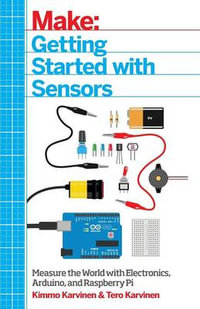
On Integrating Unmanned Aircraft Systems into the National Airspace System
Issues, Challenges, Operational Restrictions, Certification, and Recommendations
By: Konstantinos Dalamagkidis, Kimon P. Valavanis, Les A. Piegl
Paperback | 29 November 2013 | Edition Number 2
At a Glance
Paperback
$243.04
Aims to ship in 7 to 10 business days
ISBN: 9789400737655
ISBN-10: 9400737653
Series: Intelligent Systems, Control and Automation: Science and Engineering
Published: 29th November 2013
Format: Paperback
Language: English
Number of Pages: 328
Audience: Professional and Scholarly
Publisher: Springer Nature B.V.
Country of Publication: NL
Edition Number: 2
Edition Type: Revised
Dimensions (cm): 23.39 x 15.6 x 1.75
Weight (kg): 0.46
Shipping
| Standard Shipping | Express Shipping | |
|---|---|---|
| Metro postcodes: | $9.99 | $14.95 |
| Regional postcodes: | $9.99 | $14.95 |
| Rural postcodes: | $9.99 | $14.95 |
How to return your order
At Booktopia, we offer hassle-free returns in accordance with our returns policy. If you wish to return an item, please get in touch with Booktopia Customer Care.
Additional postage charges may be applicable.
Defective items
If there is a problem with any of the items received for your order then the Booktopia Customer Care team is ready to assist you.
For more info please visit our Help Centre.
You Can Find This Book In
This product is categorised by
- Non-FictionLawInternational LawPublic International Law
- Non-FictionEngineering & TechnologyTransport Technology & TradesAerospace & Aviation Technology
- Non-FictionMedicineMedicine in General
- Non-FictionComputing & I.T.Computer ScienceArtificial Intelligence
- Non-FictionEngineering & TechnologyElectronics & Communications EngineeringElectronics EngineeringAutomatic Control EngineeringRobotics
- Non-FictionEngineering & TechnologyTransport Technology & TradesAutomotive Technology & Trades
- Non-FictionEngineering & TechnologyMechanical Engineering & MaterialsProduction & Industrial EngineeringIndustrial Quality Control
- Non-FictionEngineering & TechnologyTechnology in GeneralEngineering in General
- Non-FictionLawInternational LawInternational Law of TransportInternational Space & Aerospace Law
- Non-FictionTransportationAircraft & Aviation
- Non-FictionEngineering & TechnologyOther Technologies & Applied SciencesSpace ScienceAstronautics
























